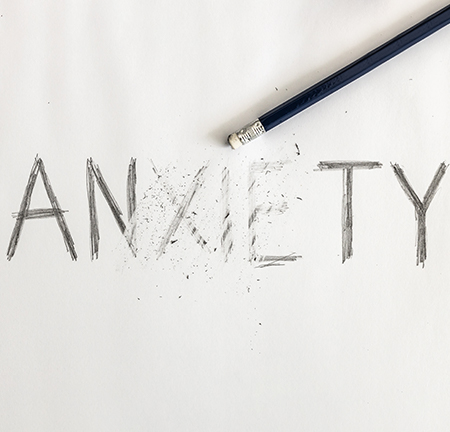 The most common reasons people seek help…
The most common reasons people seek help…
… with their mental health is for depression, mood swings, worry, anxiety, and panicky feelings.
By far!
And that’s probably why you’re here. For too long, your life has been dominated by feeling down in the dumps, having intense mood swings, or feeling worried about all sorts of things most of the time.
And it’s more than just worry. Your mind races, your body tenses up, and sometimes you feel like you have a full-blown panic attack.
There are several types of these “mood and anxiety disorders.”
Here are some composite case examples (not actual clients) to help you better understand what you’re experiencing…
Major Depression
Eric* is a 42-year-old single male who has been “really, really down for the past three or four weeks.” He was sleeping and eating way more than usual and had trouble concentrating on his job as an IT specialist.
He was even walking slower and felt that his mind was not as sharp. He said he felt like “his body was in quicksand,” his brain’s “processing speed has slowed down,” and he felt more pessimistic. His wife, Cindy, asked what was going on because he was more distant, didn’t want to do much, and didn’t seem like himself.
Eric said he was not in danger of harming himself but did have suicidal thoughts and felt lots of guilt, even though he couldn’t think of anything that he’d done wrong.
In his first therapy session, Eric wanted to know how to “get his mojo back.”
 Persistent Depressive Disorder
Persistent Depressive Disorder
Unlike Eric, Jen*, a 52-year-old divorcee, told me she had been persistently sad for the past two or three years.
Her symptoms were not as intense or debilitating as Eric’s, but they lasted much longer. She said she had felt “a low-grade depression” much of her life and has always felt “flat inside.”
She slept pretty well most of the time and had never had suicidal thoughts.
When she called to schedule a therapy appointment, Jen started crying when she said she “might have to lead a life of quiet desperation.”
Bipolar Disorder
In contrast to Eric and Jen, Bill*, a 63-year-old retired business executive, came to therapy experiencing “wild mood swings.” He vacillated back and forth, feeling like he was “on top of the world” and “capable of accomplishing almost anything”… to feeling like he was a “worthless piece of sh*t.”
Bill’s worthless feelings were similar to how Eric described his major depression. However, when Bill talked about “being high-as-a kite without doing any drugs,” he was describing the flip side of depression: mania.
When in a manic mood state, Bill engaged in all sorts of risky behaviors, like driving too fast, having short-lived affairs, and going on wild spending sprees. He also got defensive and nasty when anyone in his family tried to tell him (in a nice way) that he was “going off the deep end” and needed to slow down.
Bill began therapy by admitting that his out-of-control mood swings and impulsive behavior were ruining his life.
 Panic Disorder
Panic Disorder
The name says it all. Audrey*, a 38-year-old veterinarian, began experiencing panic attacks about six months ago. She said they started “out of the blue.”
At first, she had no idea what was behind them. She assumed she had either a “nervous breakdown” or a serious medical problem. These are common assumptions, but panic attacks are quite common.
That first panic attack happened after work when she went to grab a bite with some friends. Something was “really wrong,” as her heart was racing, her vision was blurry, she couldn’t focus, she began to sweat, and she felt a sense of impending doom.
Aubrey was worried whether she would ever feel confident again.
In her first therapy session, she said she wanted to get her life back.
Generalized Anxiety Disorder
Rob*, a 53-year-old fitness trainer, had always been “a major worry wart,” but he managed it on his own for the most part. But for the past two – three years, Rob was worrying more and more, and his “anxiety mind” started to feel like “the Energizer Bunny on steroids.”
He worried about his job, health, and future, even though all these areas of his life were fine. Moreover, Rob was overthinking everything but had no clue how to get out of his own way mentally.
Rob’s incessant worry led to indecisiveness, self-doubt, muscular tension, headaches, and an inability to relax.
Rob said he “knew rationally everything was okay,” but his anxious mind was ruining his quality of life.
 Social Anxiety Disorder
Social Anxiety Disorder
Rob was worried and anxious about all areas of his life, but Sally*, a 38-year-old single mom and talented photographer, was haunted by fears of rejection, leaving her lonely, isolated, and blocked out from the life she wanted.
While many people feel shy or awkward in certain situations, like first dates, a job interview, or meeting new people, social anxiety disorder goes way beyond transient shyness. Severe social anxiety is characterized by pervasive fears of being judged or rejected by others. Those fears typically lead to social isolation and withdrawal, severely impairing one’s opportunities and quality of life.
That’s what happened to Sally. She ended up marrying a guy who abused her while she was dating. She married him anyway because she wanted children and doubted anyone else would have her.
And even though virtually all her clients loved her and her work, her income was way below what it should have been because her fear of rejection kept her from confidently promoting her work.
Sally’s internal critic had convinced her that she was unlovable, incompetent, and worthless.
Obsessive-Compulsive Disorder (OCD)
Jim*, a successful 29-year-old software engineer with his own consulting business, reported that his mind was “all tangled up” with intrusive, repetitive thoughts that made him feel “uptight” most of the time.
For instance, virtually every day, he doubted whether he had locked the door after leaving home… or turned off the stove… or whether he might touch something like a restaurant countertop and get “infected with something.” So, he was constantly washing his hands to make sure he didn’t get sick… or repeatedly checking to make sure his doors were locked… or inspecting the stove to make sure it was off. He “knew” it wasn’t necessary, but then the doubt set in, and he couldn’t help himself.
Jim also felt compelled to ensure everything on his tabletops, desk, shelves, closets, clothes, or furniture was perfectly lined up and symmetrical. If it wasn’t, he felt nervous and tense.
Jim was embarrassed by his behavior – trapped and defenseless against these obsessive thoughts and rituals.
But in therapy, he learned some Exposure and Response Prevention (ERP) techniques that really worked.
 Do you feel alone or trapped like these folks?
Do you feel alone or trapped like these folks?
If so, you don’t have to suffer in silence. I’m here to help. There are many effective interventions for all of these problems, and we can get started right away.
Beginning in our first therapy session, we can develop an action plan based on your strengths.
You’ll also learn coping skills that really work.
Initially, I want you to start small and fully commit to making the changes needed to help you feel better. Then, I want you to “think big.” You might surprise yourself with how far you go and how much you can grow.
This is your way out of the trap!
Getting your life back will require you to stretch yourself and do the work, but it’s more than worth it.
And I’m here to guide you… every step of the way.
Don’t let any of this stuff bog you down and keep you from living your fullest life!
Call today for your free phone consultation: (610) 209-8571.
*The above names and stories are composite narratives and do not reflect actual clients.
